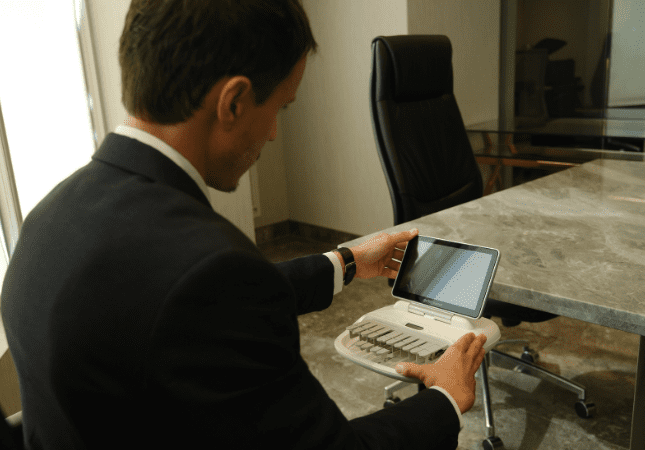The word “stenography” comes from the Greek words “steno,” meaning “narrow,” and “graphie,” meaning “writing,” and refers to abbreviated versions of writing the spoken word. Stenography dates back to the Parthenon and the mid-4th Century BC, and has been in use worldwide for hundreds of years. In 1877, Miles Bartholemew invented the first machine for writing shorthand, and in 1879 patented it. Between 1877 and the early 1970s, court reporters were required to either transcribe their stenographic writing from the paper tape they’d created on their shorthand machines or dictate it for typists.
The court reporting profession was transformed in the 1970s when the first computer-aided transcription system was invented, enabling reporters to stenographically record the written word simultaneously to a paper platen and a magnetic tape, which was then “read” by a mini-computer, which then translated the reporter’s machine shorthand into English. This process alleviated the need for the reporter to type or dictate his or her notes and greatly streamlined the transcription process.
In the 1980s, the court reporting profession underwent yet another transformation, as computerized court stenography became the technology used to provide closed captions for television broadcasts, thus propelling court reporters into an entirely new field.
In 1992, realtime captioning became a readily available tool for the deaf and hard-of-hearing community, as the first easily transported court reporting machine and computer were developed to provide Computer-Aided Realtime Translation, or CART, now referred to as Communication Access Realtime Translation. This mobile setup enabled court reporters to provide realtime translation of the spoken word in most all venues, including the courtroom, deposition suites, classrooms, seminars, workshops, sports stadiums, and conventions.
Today’s realtime court reporter is one who is expertly trained in “writing” an accurate and complete verbatim translation of the spoken word within any setting.
